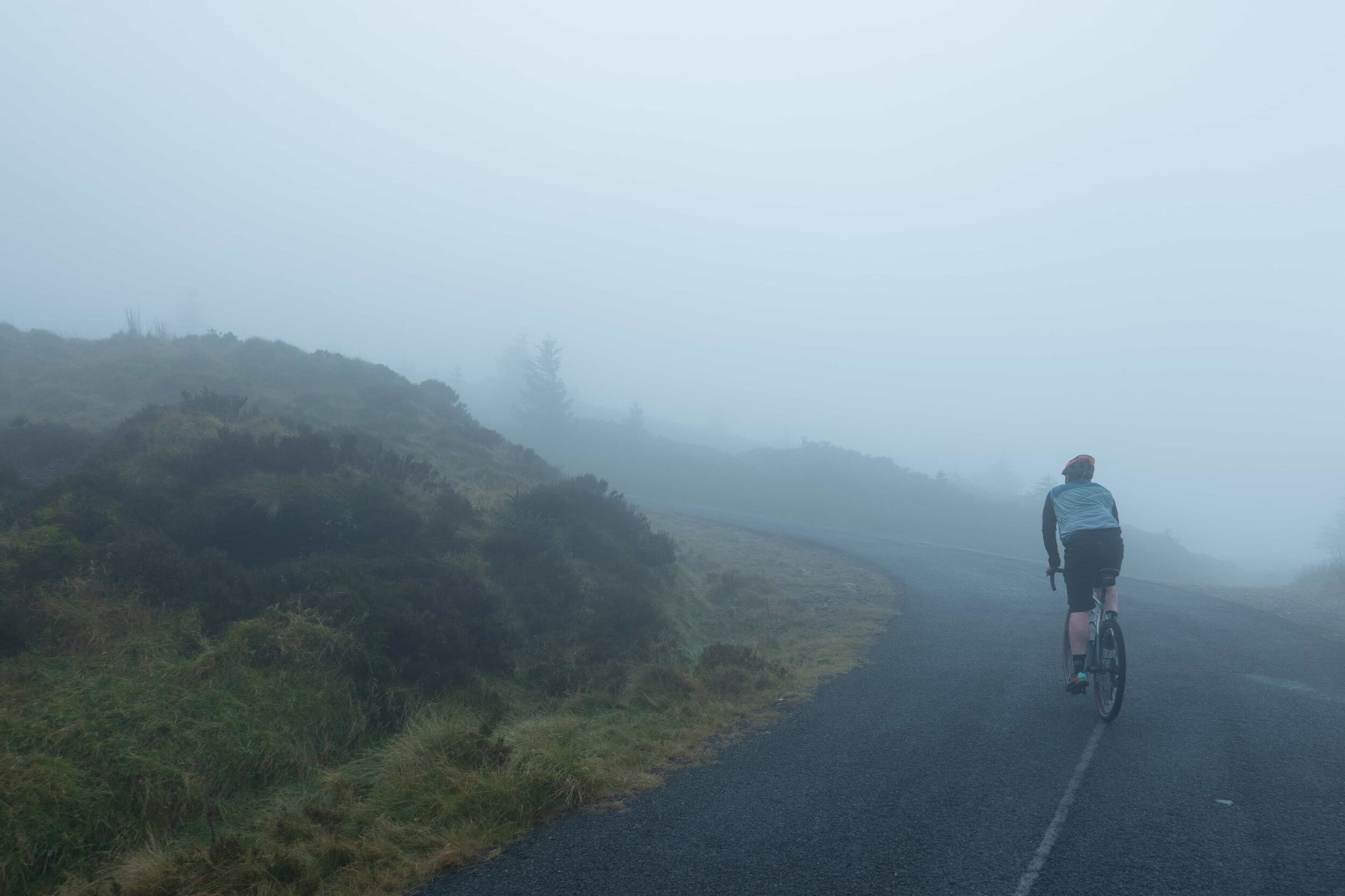Crossing the Cooley Mountains by Bike
The burnt beech leaves had tumbled through the autumn sun to the forest floor and silenced our bikes as we pedalled north on forest trails. The Cooley Peninsula in County Louth juts out into the Irish Sea, it’s anchored in the Republic yet the border with Northern Ireland skirts around the layers of peaks that make up the Cooley Mountains. This region of Ireland has had a turbulent past, but now any old relics of the division between the two countries are now rusted husks and the mountains are sprinkled with hikers, bikers and walkers every weekend.
Bikepacking in Ireland is in its formative stage, there are few official routes to follow and guides to help you plan - it's bushwacking on two wheels. Clobbering together old trail maps, satellite images on our phones and the trusty gut feeling, myself and my gravel biking buddy for the day set out to cycle over the Cooley Mountains and back again.
Flicking through our gears and picking up the pace along the tree-lined trail the sun shone in through gaps in the canopy and made polka dot pattern on the forest floor as we approached Jonesboro, a once buzzing market village that’s only a few steps into the North. The morning quickly warmed up as we rolled along gravel trails and turned from the border into Ravensdale Forest Park. This signalled the start of our climb to the mast and ancient burial cairn on the top of Black Mountain, from where we hoped to find our way onto the ex-railway village of Omeath on the far side of the peninsula.
Settling into the rhythm of climbing we set off for the summit, discussing different potential routes that might eventually take us to our destination. The morning autumn sun started to fade and a mountain fog started to surround us. "Pretty bad visibility up there lads, but it's not too cold", warned a mountain biker, making his way back down the crumbling tarmac road. Like clockwork, his words rang true as soon as we turned the next bend. The visibility and temperatures dropped and the towering phone mast that’s normally used as a marker was swallowed up by the day’s weather, blocking any hopes we had of spotting a route to Omeath from the lookout point.
We soon swapped the aging tarmac road for gravel trails through the marshy hills, littered with tyre-popping rocks and feet-soaking puddles. Steadily plodding on, the chill settled on our skin and after a handful of bumpy kilometres and a couple of wrong turns, we'd navigated our way out of the mountainside boglands.
The chocolate browns and ivy greens of the landscape melted into a blur as the trail slipped downwards and spat us out onto a whirlwind mountain road descent. Picking up enough speed to rival any car, we eased off our brakes as the wind screeched in our ears and we gently rolled our bikes around sweeping bends and kinks in the road. In a blink of any eye, we had dropped from a height that took all morning to climb and arrived at the waters of Carlingford Lough in Omeath.
Smug and covered in mud, we lazily cruised through the village and onto the Great Eastern Greenway, a 7km long stretch of family-friendly multi-use trail along the edge of the water. "It's well for ya", waved a woman watching from her garden. We knew this would be the easy part of the day, with 25km and 600m of mainly off-road climbing behind us, we were delighted to follow the heavily signposted, flat, smooth path to the medieval village of Carlingford.
Normally hopping with stag and hen parties, Carlingford felt eerily quiet that morning. Chomping down on our sandwiches and sausage rolls, we eyed up Slieve Foye and Barnevave in front of us, knowing that another solid climb was coming our way. We knew there must be a way up between the two peaks and over the ridgeline back towards our start point in Ravensdale, and that was good enough for us. Strapping up our packs and clipping in to our pedals we started to climb again.
A left turn swiftly followed by a right from the middle of Carlingford takes you back to gruelling mountain tracks. Barnabas, also known as The Famine Village, was next on our list, we were sure, even though we had no evidence, that there was a way up behind the abandoned stone buildings and back towards our start point.
The village was built in the 1600s and was long since deserted, yet solid walls, sturdy gable ends and cramped rooms still stood. High in the Cooley Mountains, the village was much bigger than we expected, with a network of paths winding around rows of buildings that looked out over the water and Northern Ireland in the distance.
Our second session of bushwacking was nowhere near as fruitful as the first. Hiking trails split, signs disappeared and paths made by roaming horses only added to our confusion. In true exploration mode, the bikes were lifted up onto our shoulders and we marched up marshy inclines that slipped underfoot and sapped our spirits with every step.
With sweat dripping from our brows and shins raw from sprawling gorse, we summited the final pitch of the day, Gerry’s Climb, named in honour of a local legend. The mountain top was an oasis. Miraculously dry and carpeted like a snooker table with pristine grass the bobbing terrain sloped downwards and our bikes were back in full flow with our freehubs whirring with joy.
Touching tarmac for the first time in a few hours, we looked up and saw Slieve Gullion in the distance, signalling that our day was nearly at an end. It was a welcome sight and after 6 hours, 1,350m of climbing and 58.75km of cycling, we'd crossed the Cooley Mountains and back again.











